Nth Degree
New member
This is really for those who are newer to the forums but also a good reminder for everyone, particularly those posting their work.
What is your first thought of this reflection shot?
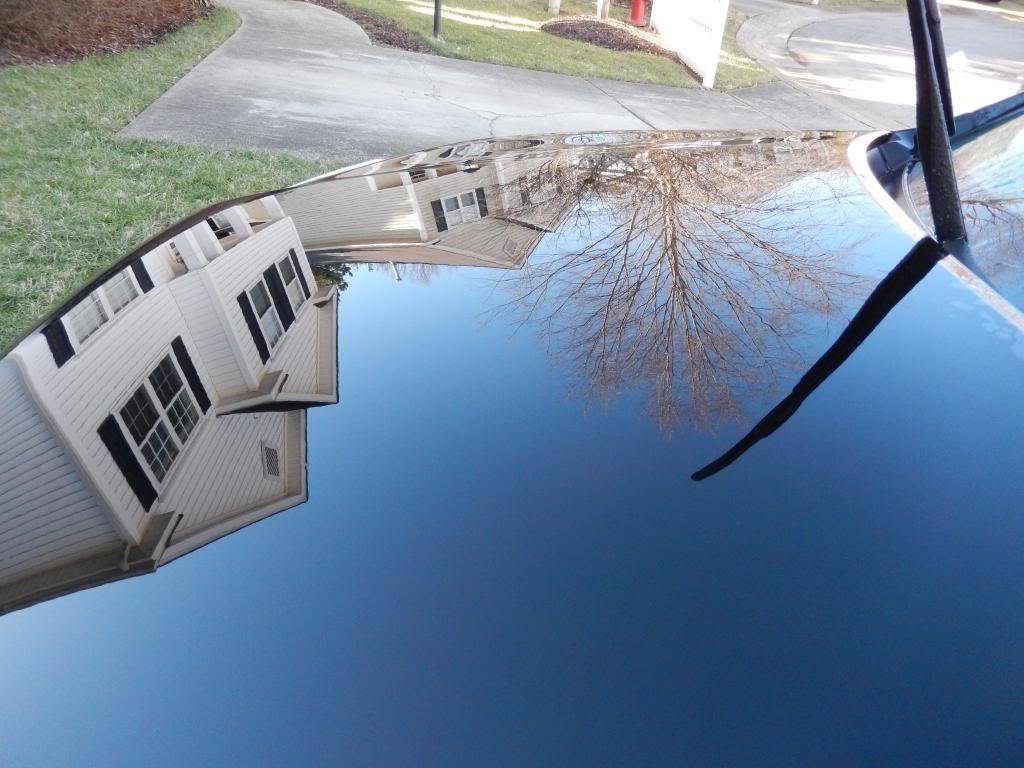
Does it look wet? Well, that's because it is. Look closely at the wiper arm and the paint near it. This was taken after a stripping wash so the water was clinging to the paint. The other point to be made here is that the sun is not directly hitting the panel.
In reality, the hood looked very much like the passenger door shown here.
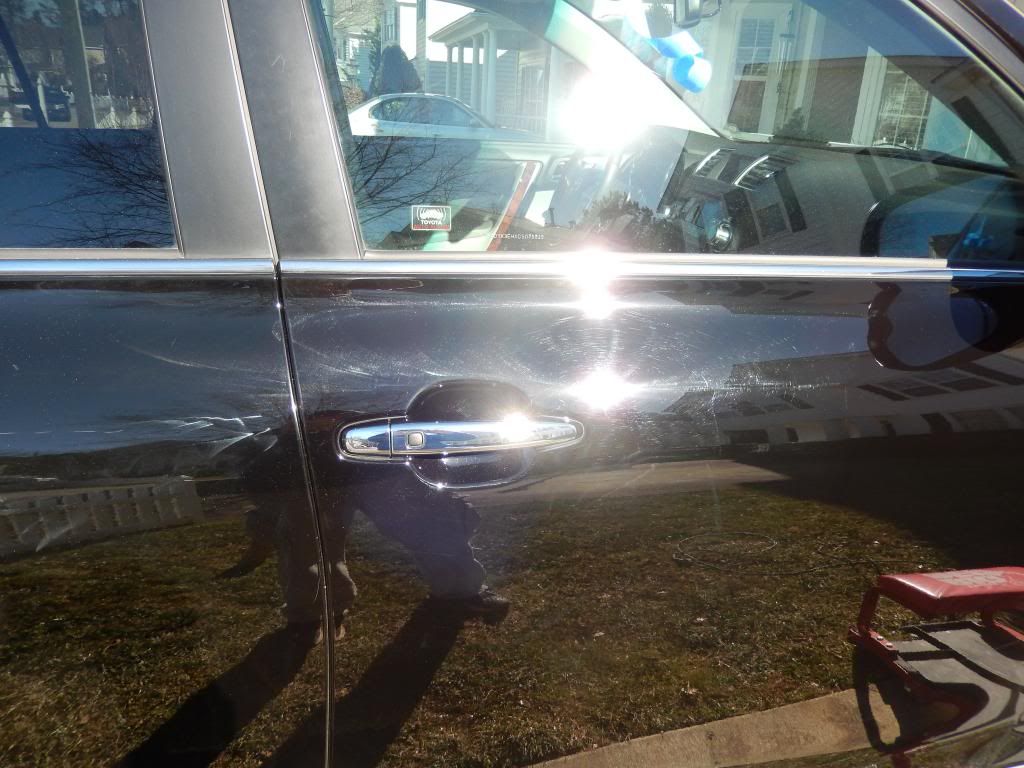
Here is another great reflection shot.

This is the roof of the same black SUV. Once again, the sun is not hitting the panel as it had already set behind the houses so it is going to look good with very little effort. This was taken after a one step polish, no LSP. What do you see in the photo? Are you seeing the surface of the paint? No. Instead of focusing on the paint that is just 2 feet away, the camera is focused on the plane that is roughly 1000 feet away.
Don't be fooled by photos that do not show what they claim to show. More importantly, don't attempt to deceive people by posting photos and claiming a perfect finish. I will admit to having a lot of photos of my work that do not have sun shots of the final result. That is largely due to the fact that I am mobile and I often finish after the sun has set.
To honestly show your work or if you are looking to hire a detailer and are looking at photos of their work there should be some photos that show the same spot in the same lighting condition.
Examples:
The 50/50 shot:
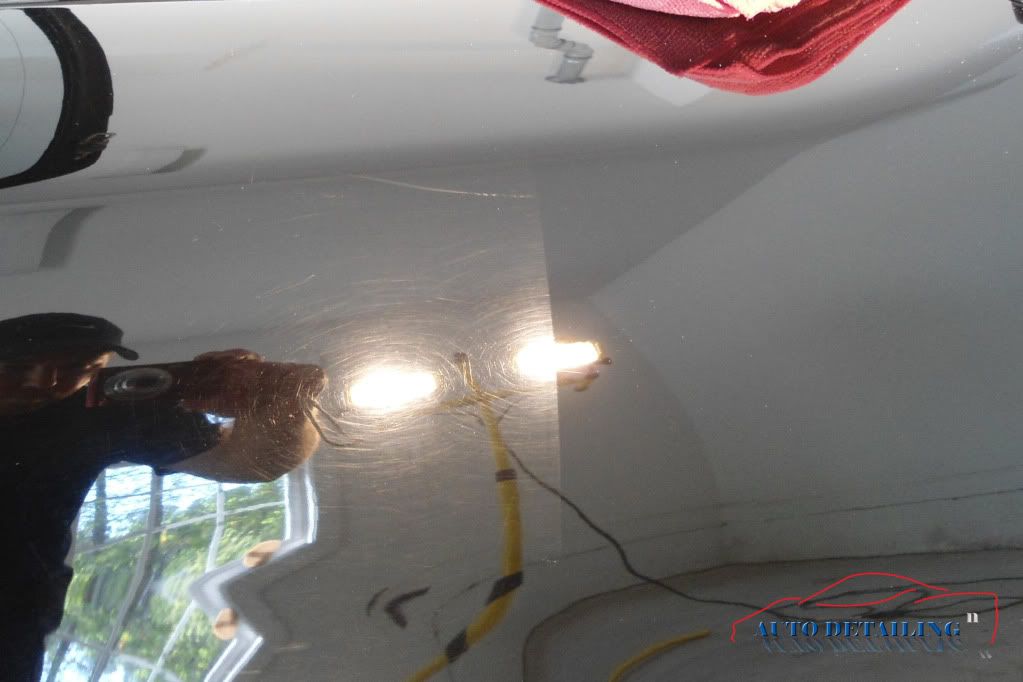
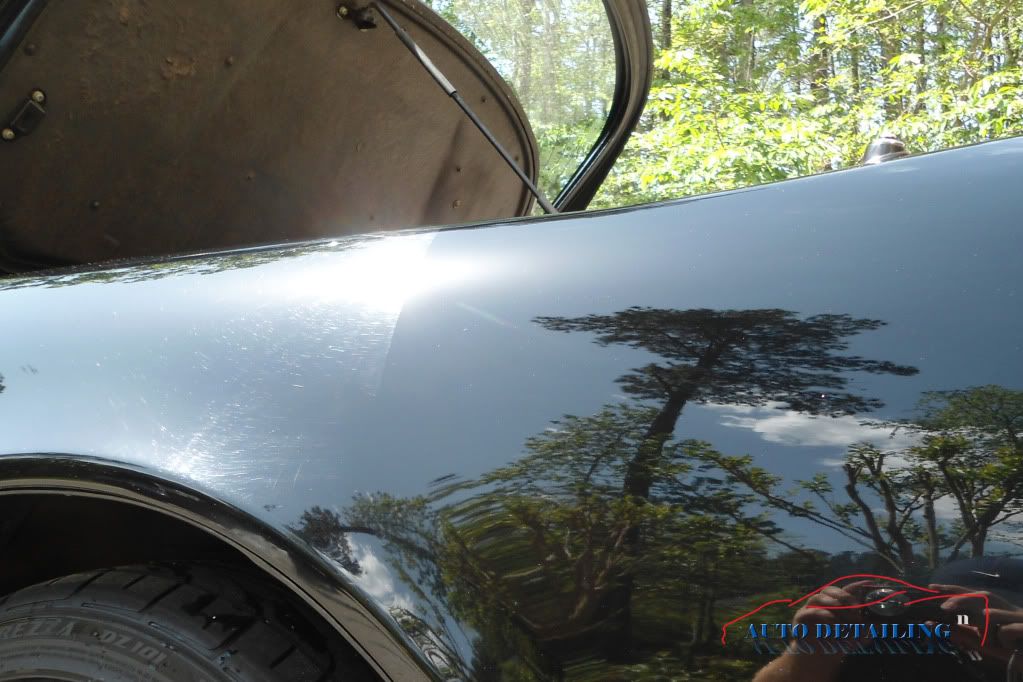
or
The Before & After:
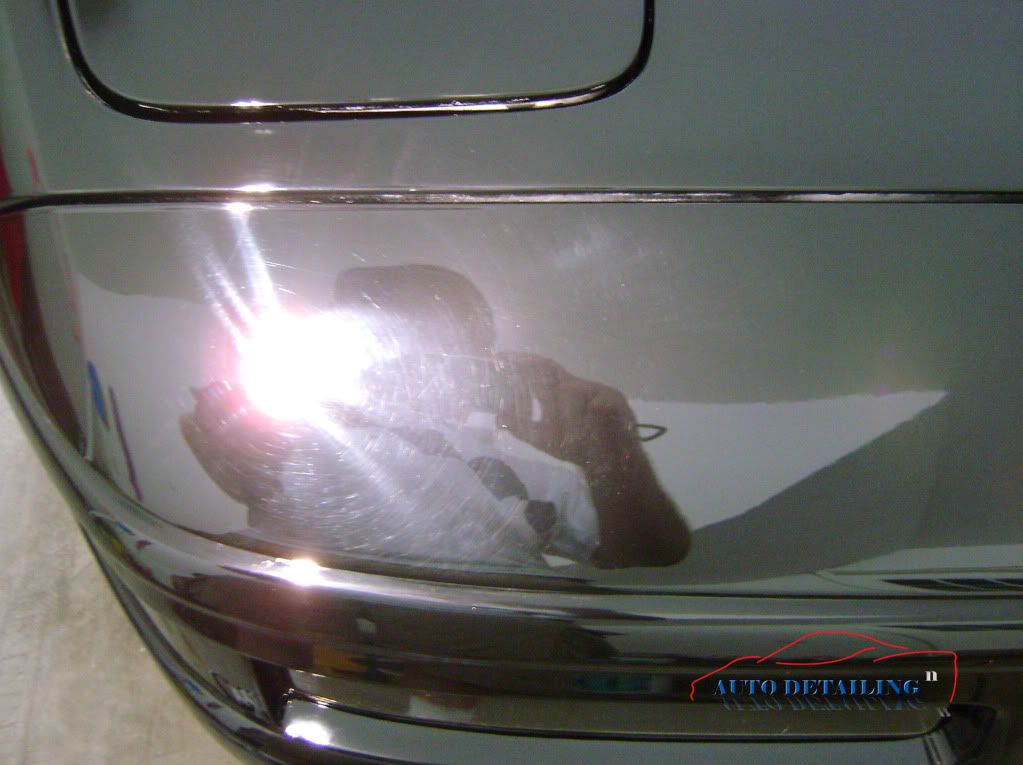
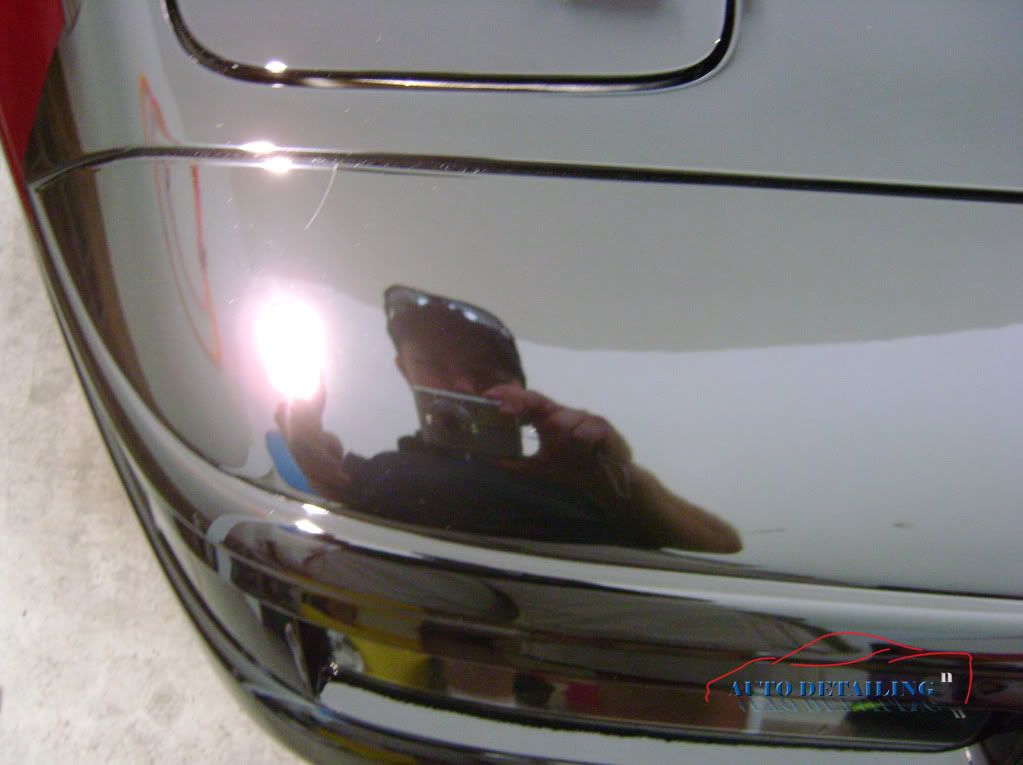
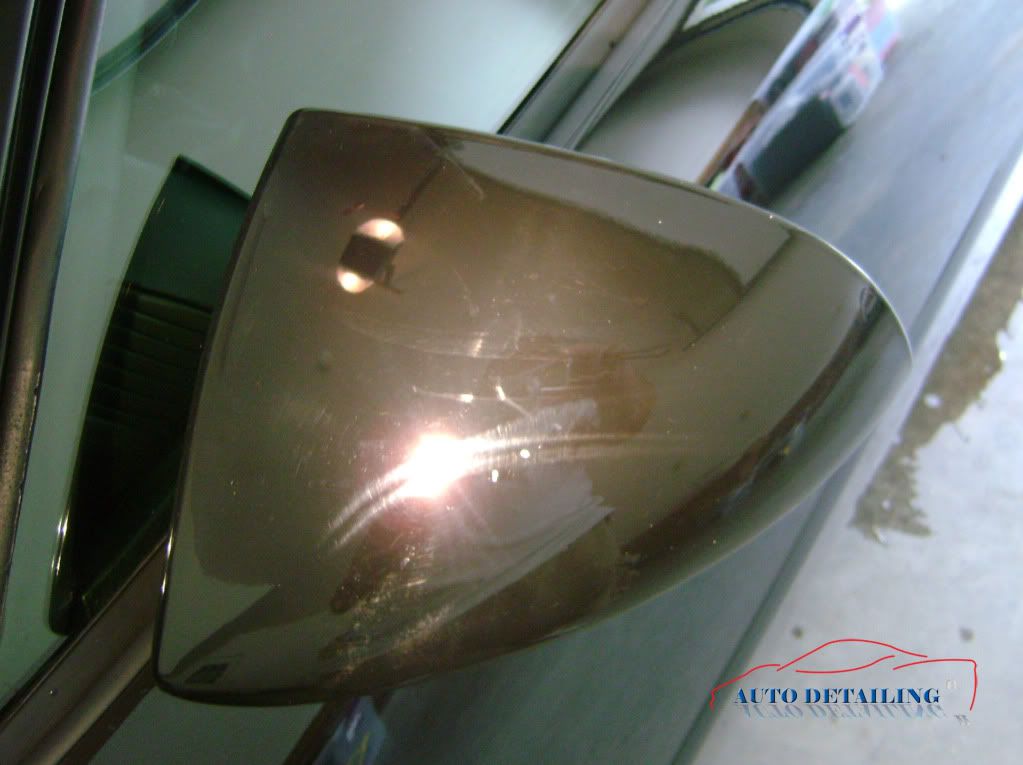
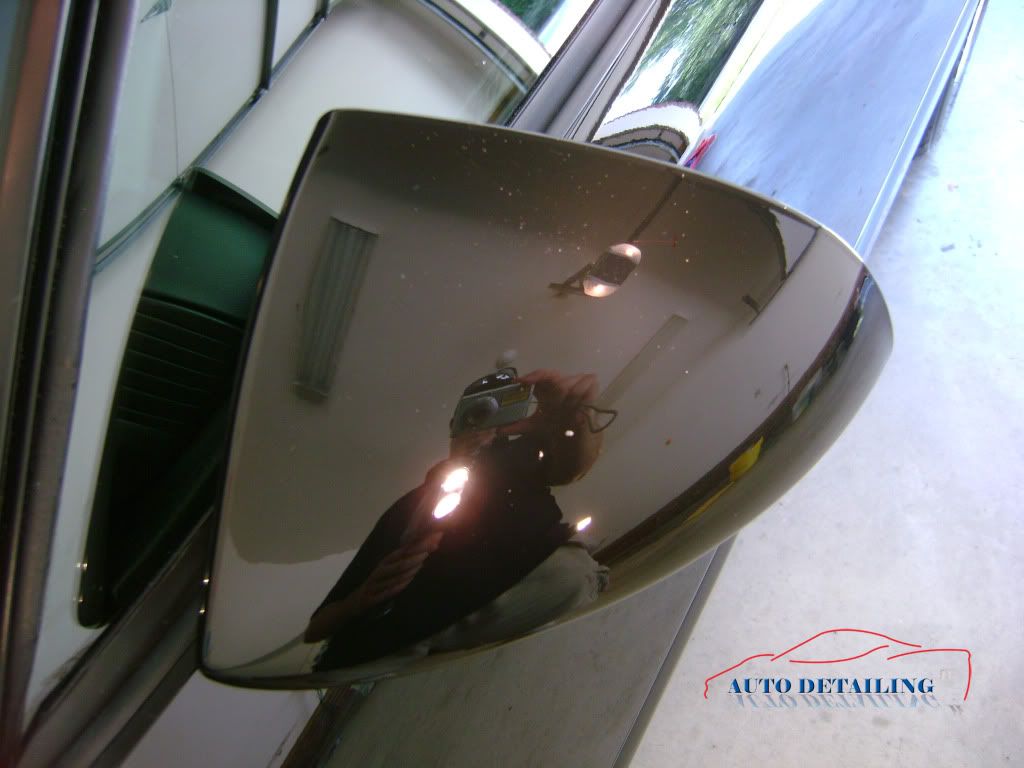
And true sun shots always reveal the most.
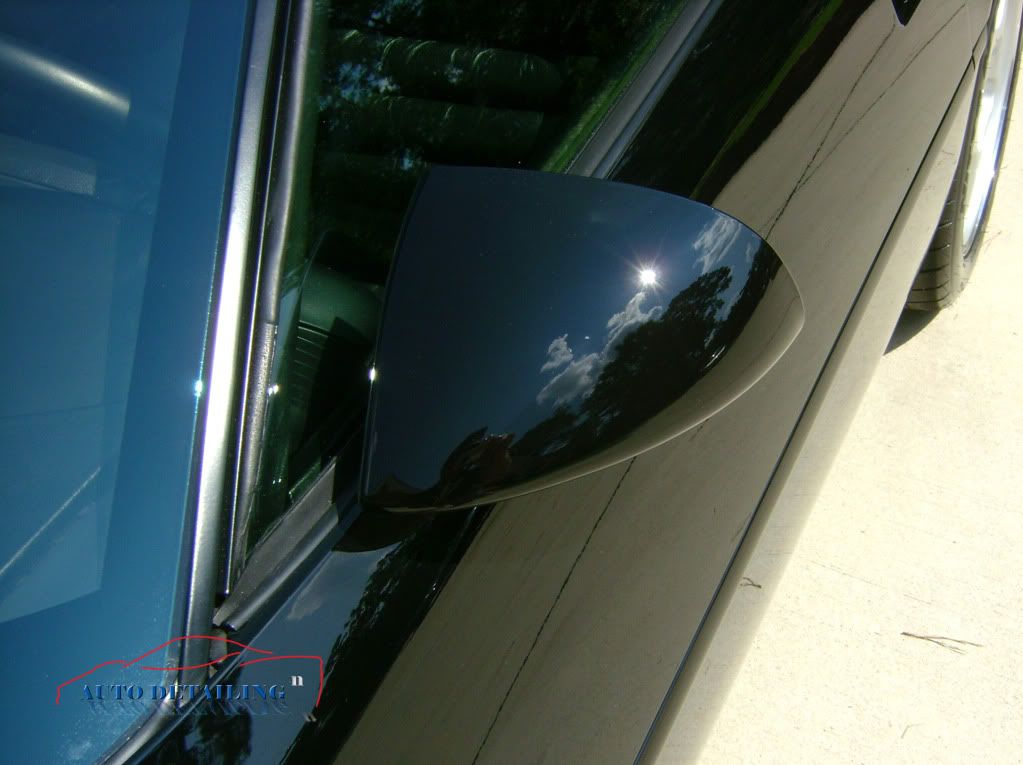
For those researching a detailer: remember that you are probably only seeing the photos selected by the detailer that best show their work. If they only provide a handful of vehicles in their gallery that each has several photos of nothing but final shots in the shade you should proceed with caution; they may not be of the caliber they claim.
What is your first thought of this reflection shot?

Does it look wet? Well, that's because it is. Look closely at the wiper arm and the paint near it. This was taken after a stripping wash so the water was clinging to the paint. The other point to be made here is that the sun is not directly hitting the panel.
In reality, the hood looked very much like the passenger door shown here.

Here is another great reflection shot.

This is the roof of the same black SUV. Once again, the sun is not hitting the panel as it had already set behind the houses so it is going to look good with very little effort. This was taken after a one step polish, no LSP. What do you see in the photo? Are you seeing the surface of the paint? No. Instead of focusing on the paint that is just 2 feet away, the camera is focused on the plane that is roughly 1000 feet away.
Don't be fooled by photos that do not show what they claim to show. More importantly, don't attempt to deceive people by posting photos and claiming a perfect finish. I will admit to having a lot of photos of my work that do not have sun shots of the final result. That is largely due to the fact that I am mobile and I often finish after the sun has set.
To honestly show your work or if you are looking to hire a detailer and are looking at photos of their work there should be some photos that show the same spot in the same lighting condition.
Examples:
The 50/50 shot:


or
The Before & After:




And true sun shots always reveal the most.

For those researching a detailer: remember that you are probably only seeing the photos selected by the detailer that best show their work. If they only provide a handful of vehicles in their gallery that each has several photos of nothing but final shots in the shade you should proceed with caution; they may not be of the caliber they claim.
